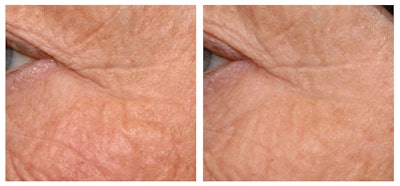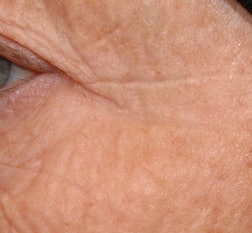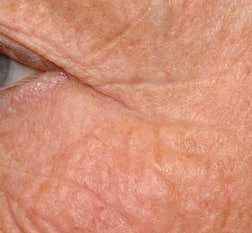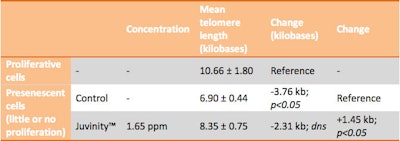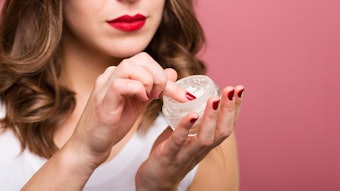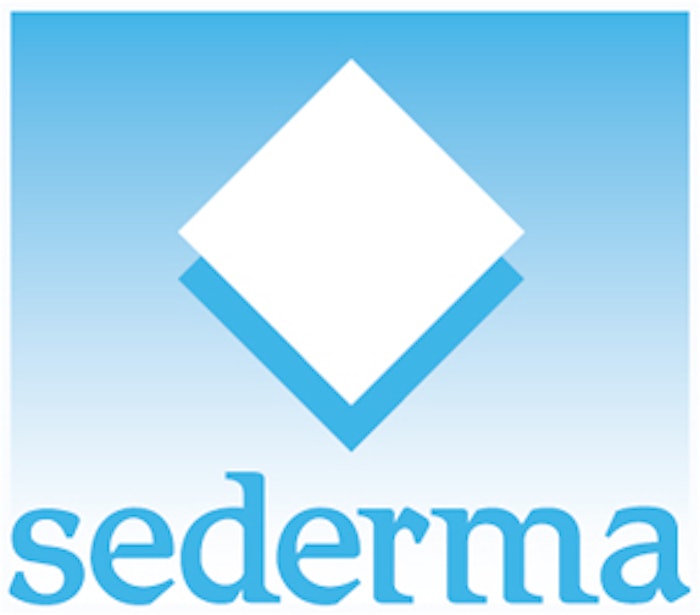
Our skin ages because, individually, each cell of the body ages and enters the senescence phase, according to a chronology defined by a cellular biological clock: the telomere.
The telomere is a fairly long repeated nucleotide sequence that terminates the chromosome and is partly folded over this extremity (cap) to protect it. At each cycle of cell division, chromosomes are unraveled, duplicated and then recompacted, but with a partial loss of this protective terminal sequence.
The length of telomeres becomes shorter during the replicative life of cells. When telomere length becomes really short, cells stop their division/replication and enter senescence. Therefore, one of the most reliable markers of aging is the length of telomeres.
In order to limit premature cell aging and senescence, it appears essential to delay telomere shortening.
Recharge the skin with long-life youth
Juvinity, based on a complex lipid derived from a key molecule in the cell functionality, has been demonstrated to limit telomere shortening in order to ensure an optimal replication process similar to a young cell.
An in vitro study was conducted and showed that long-term culture of human dermal fibroblasts (HDF) in the presence of Juvinity delays telomere shortening relative to the controls (see Table 1: Telomere length of presenescent cells).
By maintaining telomere length, Juvinity prolongs cell lifespan. Metabolic and nucleus senescence are delayed and aging cells are encouraged to act as young cells. The visible result is a reduction of aging signs:
View Juvinity Before and After photos.
To know more about Juvinity and request a sample and/or literature, please click the link.
Expand skin’s youth span
Renovage, another pluripotent active ingredient developed by Sederma, has also been demonstrated to slow down telomere erosion (results not shown here, available upon request). It notably showed by DNA array on keratinocytes a stimulation of the genes involved in telomere maintenance. The impact of Renovage on skin cell senescence was then measured in vitro on fibroblasts.
Figure 1: In vitro effect of Renovage on skin cell senescence (fibroblasts).
In the presence of Renovage, the fibroblasts retained their replicative capability longer than the control and the differences were highly significant. When the falloff began, the Renovage-exposed cells remained two-fold more active than the control cells. For a total culture duration of 9.5 months, Renovage increased cell lifespan by one-third and cell senescence was delayed by 3.5 months. Clinical studies were also conducted to show the visible impact of Renovage on skin surface: skin is smoother, more uniform and looks younger (results not shown here, available upon request). Renovage complies with the Chinese regulation for cosmetic ingredients. Request sample of and/or literature about Renovage.
These two examples demonstrate the importance of telomere length maintenance in the fight against skin aging. This strategy becomes even more interesting having in mind that a high level of chronic psychological stress results in less effective telomere repair and shorter telomere length.
Disclaimer:
The above paid-for content was produced by and posted on behalf of the Sponsor. Content provided is generated solely by the Sponsor or its affiliates, and it is the Sponsor’s responsibility for the accuracy, completeness and validity of all information included. Cosmetics & Toiletries takes steps to ensure that you will not confuse sponsored content with content produced by Cosmetics & Toiletries and governed by its editorial policy.
